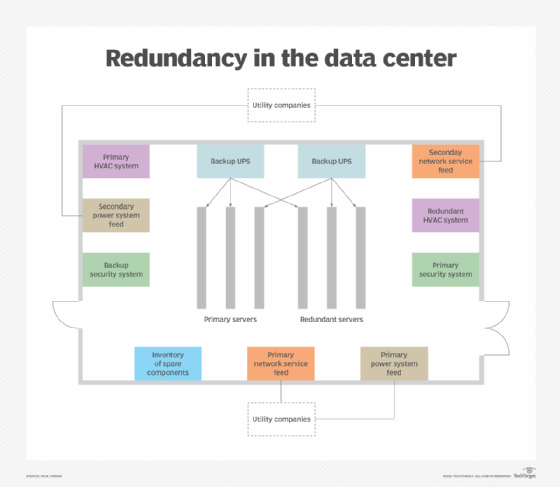Your Rights to Redundancy If Company Goes Bust: UK Employee Protections
Your Rights to Redundancy If Company Goes Bust: UK Employee Protections
Blog Article
Examining the Interaction Between Firm Redundancy and Organizational Adaptability for Future Development
In the dynamic landscape these days's company globe, the complex partnership between company redundancy and business adaptability arises as an important factor for sustained development and success. Firms usually deal with the obstacle of striking a delicate equilibrium between preserving a degree of redundancy to reduce dangers and cultivating flexibility to respond promptly to the ever-evolving market demands. This fragile interaction holds the essential to not just surviving in unstable times but likewise growing when faced with unpredictability. As we explore the multifaceted measurements of this interplay, appealing understandings into exactly how companies navigate these complexities to pave the means for future development await.
Significance of Business Redundancy
Business redundancy is a crucial aspect that boosts business durability and minimizes functional dangers. By including redundancy actions within the business structure, firms can much better hold up against unpredicted disturbances and fluctuations in the service atmosphere. Redundancy serves as a tactical buffer, allowing companies to adjust and react properly to unexpected challenges without endangering crucial procedures.
One secret element of the significance of company redundancy is its role in ensuring connection throughout times of dilemma. When faced with sudden adjustments or emergency situations, redundant systems, resources, or workers can action in to keep critical functions and avoid widespread disturbances. This continuity not only safeguards the firm's reputation and customer trust fund however also decreases monetary losses and operational downtime.

Strategies for Organizational Versatility

Another essential method is purchasing modern technology and framework that can support versatility and scalability. Applying electronic tools, automation, and data analytics can streamline procedures, enhance efficiency, and offer beneficial insights for informed decision-making. Additionally, creating adaptable organizational structures that permit for fast adjustments to market characteristics and customer requirements is important for remaining affordable in a rapidly progressing setting. By proactively identifying prospective disturbances and chances, organizations can proactively prosper and adjust in an ever-changing business landscape.
Harmonizing Redundancy and Adaptability
Accomplishing an unified balance between functional redundancy and business versatility is extremely important in browsing the intricacies of a dynamic company setting. Striking the right balance between redundancy and adaptability is a fragile procedure that calls for a deep understanding of the organization's objectives, market characteristics, and danger resistance.
To attain this balance, companies need to conduct normal analyses of their procedures to identify areas where redundancy is necessary for threat mitigation and where versatility can drive advancement and development. Applying flexible frameworks, cultivating a culture of constant understanding and renovation, and motivating open interaction across all degrees of the organization are vital approaches to harmonize redundancy and adaptability effectively. By aligning these 2 critical components, business can position themselves for sustainable growth and success in an ever-changing company landscape.
Study on Adaptation Success
In analyzing instances of successful organizational adaptation, it comes to be apparent that the interaction in between functional redundancy and flexibility is a defining consider forming resilient services. One compelling situation research study is that of Netflix. At first a DVD rental solution, Netflix showed remarkable flexibility by transitioning right into a streaming system when digitalization interfered with the market. By tactically investing in innovation and web content production, Netflix not just made it through yet grew in a rapidly progressing market. One more standout example is Amazon. Beginning as an on the internet book shop, Amazon constantly adapted its company design, increasing right into varied markets such as cloud computer and artificial intelligence. This versatility permitted Amazon to remain ahead of rivals and meet altering consumer needs. Last but not least, Adobe provides a noteworthy image of successful adjustment. The business moved from marketing software application licenses to a subscription-based model, ensuring recurring earnings streams and boosted customer engagement. These study underscore the significance of functional redundancy paired with business adaptability in promoting lasting development and competition.
Structure Strength for Future Growth
Structure resilience for future growth calls for a critical positioning of functional procedures with market dynamics and arising trends. Firms need to adjust to altering view atmospheres by promoting a culture of versatility, innovation, and continuous enhancement. Resilience involves not just recuperating from setbacks however likewise proactively planning for future challenges. One crucial facet of building durability is buying robust danger monitoring strategies to mitigate possible disruptions. This why not try this out consists of situation planning, expanding supply chains, and developing backup prepare for numerous backups (who pays redundancy money).
Furthermore, fostering strong relationships with stakeholders, such as customers, staff members, distributors, and the area, is essential for preserving and weathering uncertainties trust fund and support during stormy times. Effective interaction and openness play an important function in structure resilience, as they assist align assumptions and facilitate cooperation in navigating unpredictabilities.
Furthermore, organizations require to prioritize learning and advancement initiatives to upskill workers and furnish them with the necessary tools to adapt to transforming situations. By purchasing their workforce, firms can enhance their adaptability and dexterity, ultimately strengthening their durability for lasting future development.
Conclusion

In the dynamic landscape of today's service globe, the complex partnership between firm redundancy and organizational versatility arises as an essential aspect for continual development and success. Firms often face the challenge of striking a fragile equilibrium in between maintaining a degree of redundancy to alleviate dangers and promoting adaptability to react quickly to the ever-evolving market demands.To accomplish this equilibrium, business require to perform normal evaluations of their operations to identify areas where redundancy is needed for danger reduction and where adaptability can drive innovation and development.In final thought, the interaction between firm redundancy and business adaptability is crucial for future development. Structure strength through a mix of redundancy redundancy if company goes bust and versatility will certainly guarantee that business are prepared for the challenges of the future.
Report this page